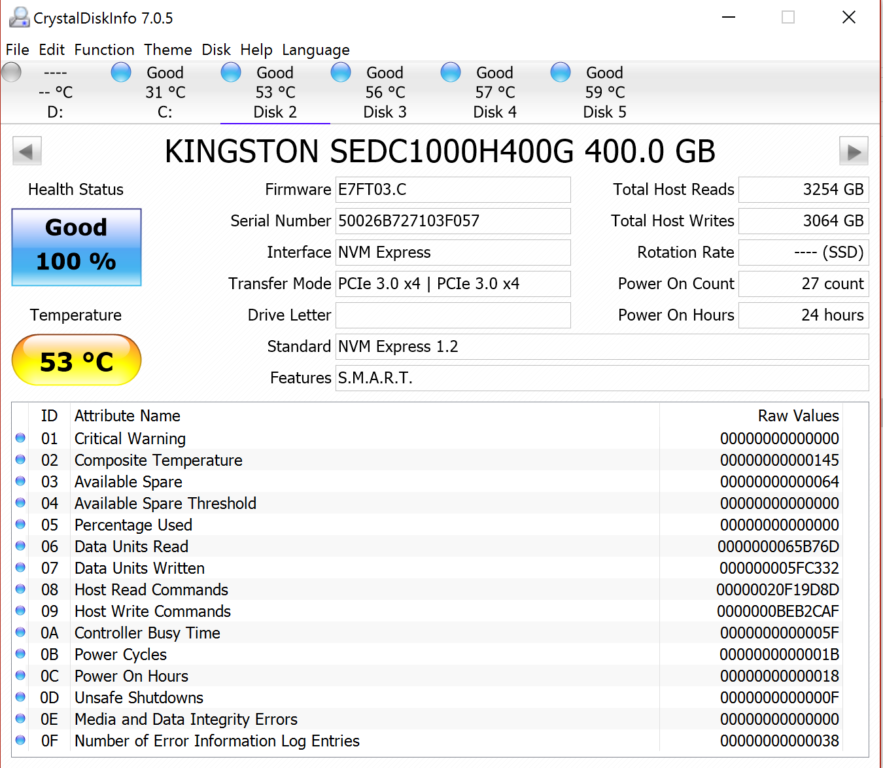KINGSTON DCP1000 SSD RAID 0 TESTS
As we had stated earlier, the only way to RAID for our testing is through the OS; it could not be done through UEFI RST. This also meant the drive was not bootable, unless of course, we elected to go with a single boot drive and triple RAID volume as discussed earlier. This CDI result does demonstrate that we wrote quite a bit to the drive in our attempts though…
CRYSTAL DISK INFO VER. 7.0.5
CRYSTAL DISK BENCHMARK VER. 5.2.1 X64
ANVIL STORAGE UTILITIES PROFESSIONAL
PCMARK 8
Looking at the RAID volume results, we were impressed by the results. Crystal DiskMark and ATTO show 7GB/s read and over 6GB/s write. The transfer speed of 2.8GB/s in AS SSD Copy BenchMark was pretty encouraging. Anvil was shown to be very impressive as well at 18.9K points…so let’s move on to some true to life testing.
 The SSD Review The Worlds Dedicated SSD Education and Review Resource |
The SSD Review The Worlds Dedicated SSD Education and Review Resource | 


As expected, the Kingston DCP1000 is an absurdly powerful PCI-e SSD, especially when it comes to Real World File Transfers. It’s only caveat for me, being that all 4 M.2 SSD’s cannot be configured as a boot volume.
Yes… but imagine going the 1/3 route where the first SSD is still pushing over 2GB/s while the remaining three have to be reaching above 5GB/s. I should have tested this specifically but never had the idea until it was shipped off for our enterprise testing.
Les, maybe if you had an Intel DC P3700 on hand, you could’ve done some File Copy tests with the Kingston DCP1000
Yes that would have been possible but comparing any similar enterprise storage resource in a simple file transfer test isn’t really a fair proposition. It is like putting it beside the P4800x and forming opinion on file transfer where the DCP1000 would destroy the P4800…. until of course they are put side by side in true server settings and that P4800 has no settling whatsoever for steadystate.
You’re linking to an old AS SSD https://www.guru3d.com/files-details/as-ssd-benchmark.html is the new one idk about the other softwares you’re linking to!
I’d be curious how the PCIe host card performed with several other M.2 drives installed. This would be a quick and dirty way to get four Samsung 960 Pro’s into a system.
Also curious how it would have handled a single 4x PCIe 3.0 based M.2 drive when put into an older system with an 8x PCIe 2.0 slot. That’d be one way to provide more bandwidth to an older system.